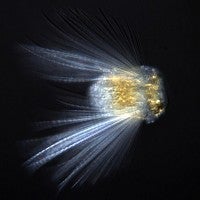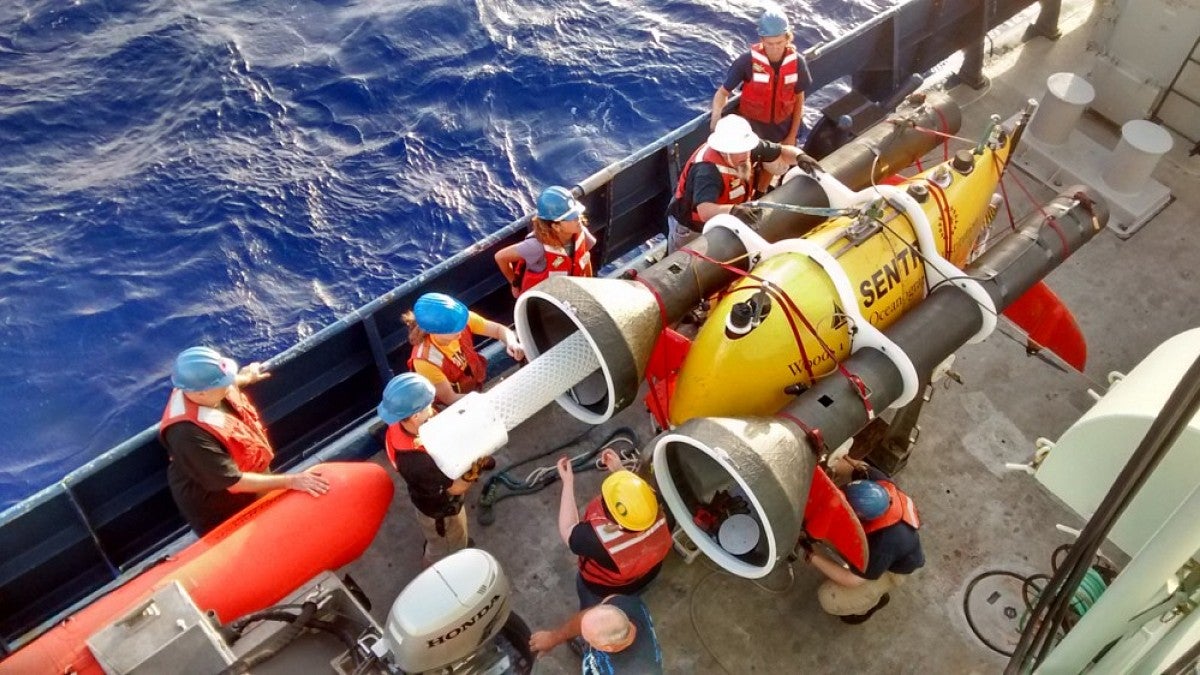Using an unmanned underwater vehicle fitted with equipment resembling two bazookas, University of Oregon biologists and scientists from three other U.S. institutions have successfully collected deep-sea animal larvae from more than a mile deep in the Atlantic Ocean.
The new approach, which safely gathers and preserves delicate living specimens, is expected to revolutionize how plankton are collected for research purposes in deep-sea operations, report the scientific team in a news release issued by Duke University, which has the lead on an expedition still at sea along the U.S. East Coast.
► UO crew also on board during discovery of a centuries-old shipwreck
Scientists and engineers from Duke University, the UO and Woods Hole Oceanographic Institution deployed the new plankton sampler — nicknamed PlankZooka for its uncanny resemblance to bazooka rocket launchers — July 9 during a research expedition aboard the research vessel Atlantis. Scientists from North Carolina State also are part of the expedition.

Young said that OIMB scientists have been working to find high-resolution ways to sample animal larvae — primarily mussels, clams and tubeworms — in a precise way along the seafloor. Until the sampler was perfected, he said, nets had been dragged along the seafloor for miles at a time. While larvae had been collected, they often were too damaged to study and it was impossible to pinpoint exactly where the nets had gathered the specimens.
"We had worked with the engineers at Woods Hole a couple of years ago to develop a sampler that could suck water and try to collect some of these larvae," he said. "We deployed it last year in the Gulf of Mexico, but it collected just a single larva. The volumes filtered were so low, and the way it was made damaged the specimens. It didn’t work well, so we regrouped."
The National Science Foundation supports the UO's participation in the research through a grant (OCE-1030453) to Young and Svetlana Maslakova.

The expedition began July 8, departing from Moorhead City, North Carolina. It ends July 28 at Woods Hole, Massachusetts. Along the way, scientists are visiting all known methane seeps along the U.S. eastern seaboard, including the Baltimore and Norfolk canyons that were discovered by UO scientists in a previous expedition.
The UO team is studying the dispersal of larvae at methane seeps in the western Atlantic.
UO team members on the current expedition are Young; his graduate students Kirstin Meyer and Caitlin Plowman; two undergraduate marine biology majors, Livier Enciso and Katherine Medina; technician Kara Robbins, who recently earned a bachelor's degree from the UO in marine biology; postdoctoral researchers Laurel Hiebert from Maslakova's lab and Luciana Genio of Portugal from Young's lab. Also with the UO group is Manuel Maldonado, a scientist with the Institute of Advanced Studies in Blanes, Spain. Maslakova is not on this expedition.
After Maslakova's lab analyzes the DNA of the captured animal larvae, Duke University geneticists match the larvae with adult specimens found at the various seeps. North Carolina State University scientists are doing oceanographic modeling, based on where larvae are located and how fast they move. Eventually, scientists may be able to determine if there are connections among the animals at the various methane seeps.
— By Jim Barlow, Public Affairs Communications


